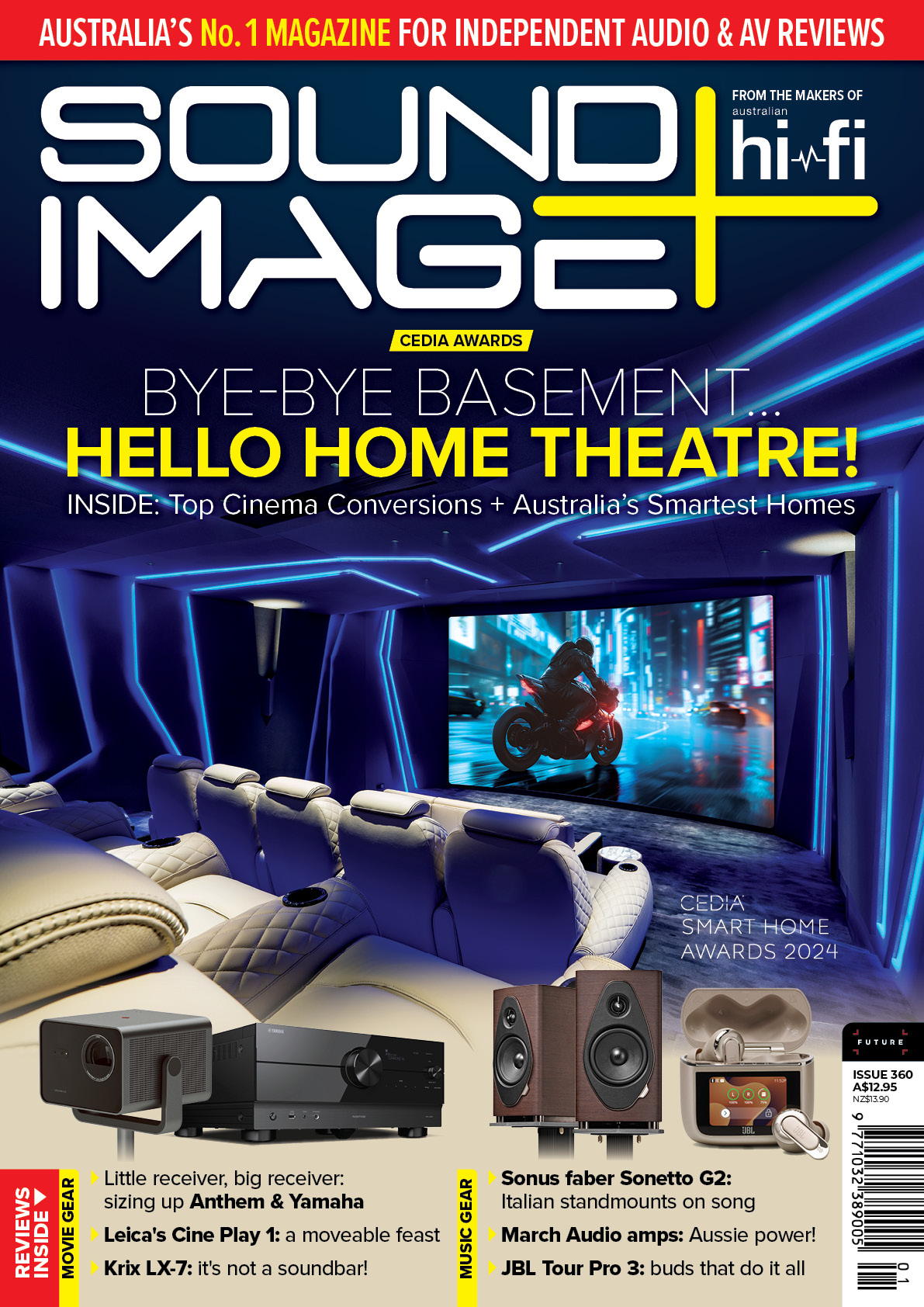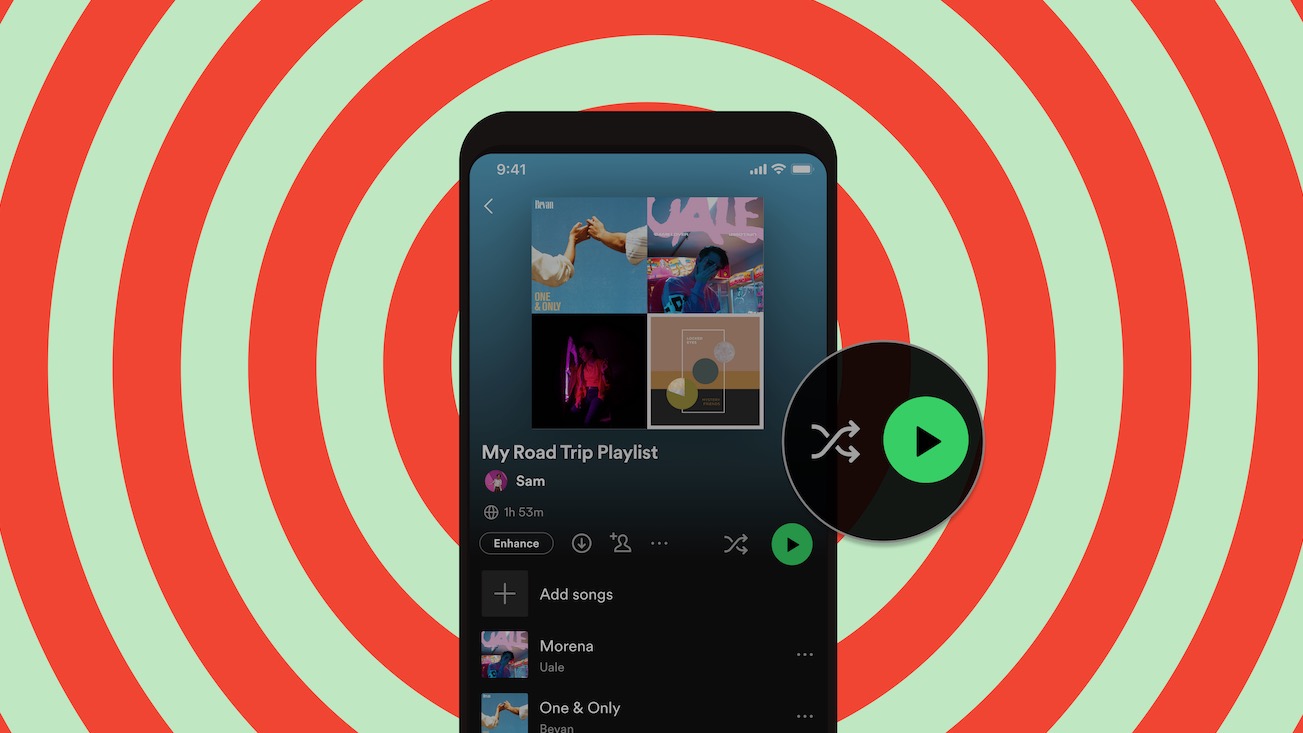Sound+Image Verdict
The Yamaha RX-V6A is a fine not-so-entry-level networked and nicely smart AV receiver, and with its welcome face-lift you’ll know this is a firmly 21st-century unit.
Pros
- +
Very solid surround performance at the price
- +
Decent stereo performance
- +
First-class network audio
Cons
- -
Speakers other than front stereo pair must be at least six ohms impedance
Why you can trust What Hi-Fi?
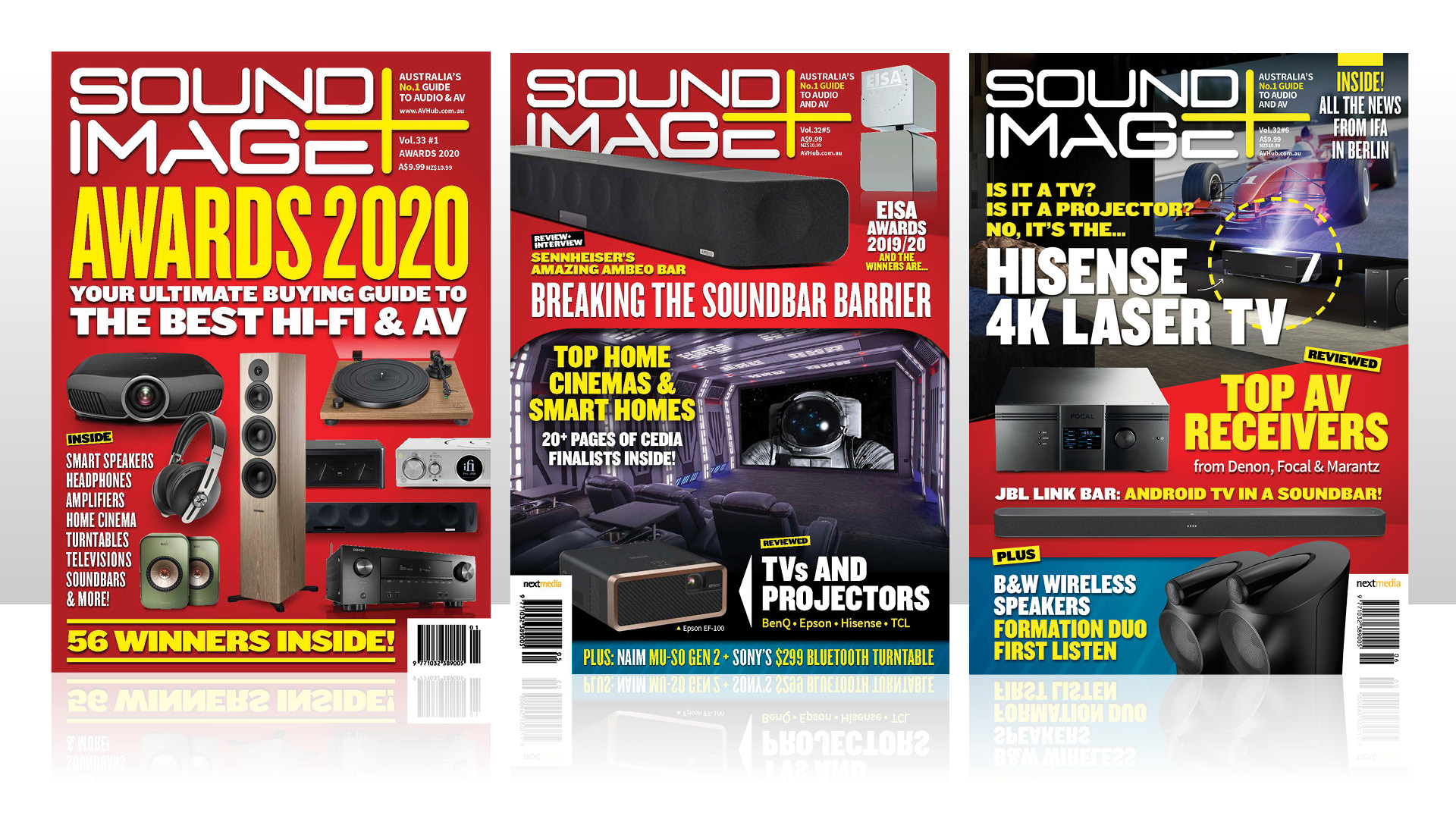
This review originally appeared in Sound+Image magazine, one of What Hi-Fi?’s Australian sister publications. Click here for more information on Sound+Image, including digital editions and details on how you can subscribe.
Yamaha is shaking up its home cinema receivers for the first time since the Aventage line was launched a decade ago. And here’s one of the first two results of that shake-up: the Yamaha RX-V6A.
Yamaha RX-V receivers have been around for a good long time. We looked back through our reviews and found we’d reviewed an RX-V receiver back in 1999… our own digital records get sparse beyond that, but to save us searching in basement filing cabinets, Yamaha reminds us that the 1999 model was far from the first of the breed, as Yamaha began shipping the RX-V850 and RX-V1050 receivers in 1991. They were radical back then, because all other Dolby Pro Logic decoders of the day were analogue, “with mediocre
separation and steering between the left, centre, right and surround channels” says the company, whereas the first RX-V receivers were built around a digital surround decoder IC developed by Yamaha. Their success was immediate.
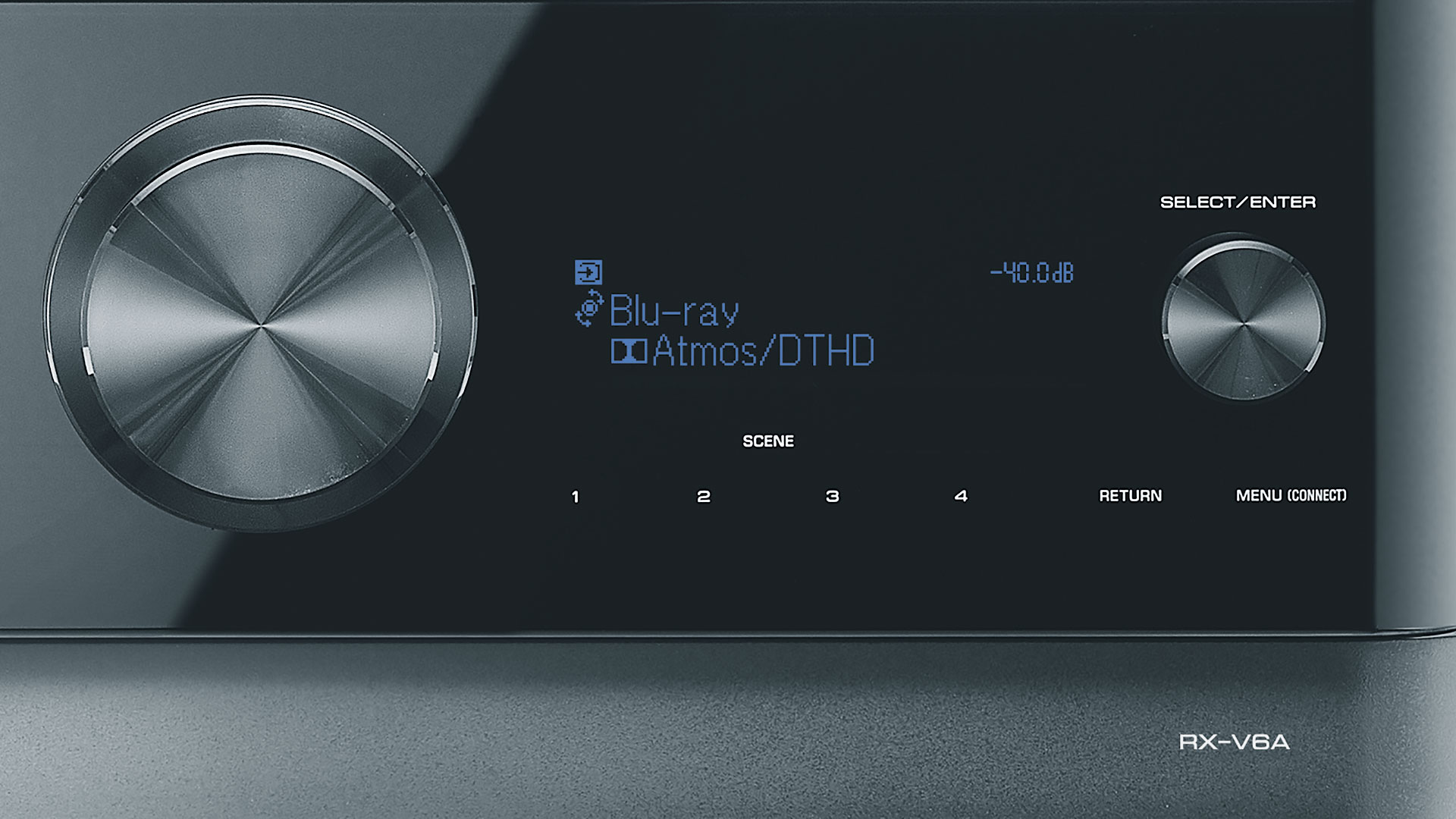
Build & connections
Thirty years on, then, what has changed in this new range seems initially largely cosmetic. But that’s welcome. Most AV receivers have square corners, a large display in the middle with blue or amber lettering, and a couple of knobs on each side. As we said, it may be cosmetic but the new facade changes the look of the Yamaha RX-V6A (priced at £649.95, $599.95, AU$1299) rather significantly. The verticals to the left and right of the front are curved, while at centre rests a very large volume control.
To the right of the knob there’s still a display showing similar information to that of earlier models, but this appears to be an LCD, perhaps OLED, monochrome display with soft blue lettering over a black background. The input selector is to the right of that: a knob, but fairly small. Underneath the display and selector knob are a set of six touch-sensitive spots on the front panel which replace the push buttons of yore. Four of those are for scene selection, one invokes the menu, while the final one backs out of things.
Also on the front panel is a 3.5mm input for the calibration microphone, a 6.35mm output for headphones, and a USB connection for playing back USB audio. Apple’s iPhones are no longer supported by USB these days, but instead, and rather more conveniently, you use the network features of the Yamaha RX-V6A for playing back your iPhone music: specifically Apple’s AirPlay 2.
Or, more powerfully, use the Yamaha MusicCast app on your Apple or Android device. Or, for that matter, any DLNA/uPnP music player on any device.
Indeed with the MusicCast app on your device (Apple or Android is fine), you can also dial up music from Spotify, Tidal, Deezer or Amazon Music (if you have appropriate subscriptions) and more besides. We’ll return to how that stuff goes in practice.
Yamaha’s MusicCast network audio system is also a nicely mature multiroom system. You can fill your home with MusicCast devices so that you can have music wherever you like. We notice that this year it has been advanced even further: you can now configure separate wireless MusicCast speakers to act as wireless rear speakers for your movie room.
The receiver is rated at 100W for each of its seven channels into eight ohms. If you want to use lower impedance speakers there’s a setting in the set-up menus, though unfortunately four-ohm loudspeakers are supported only for the front left and right channels. For all the rest, a six-ohm nominal impedance is the minimum (and perhaps not coincidentally, most Yamaha home speakers have six ohms nominal impedance).
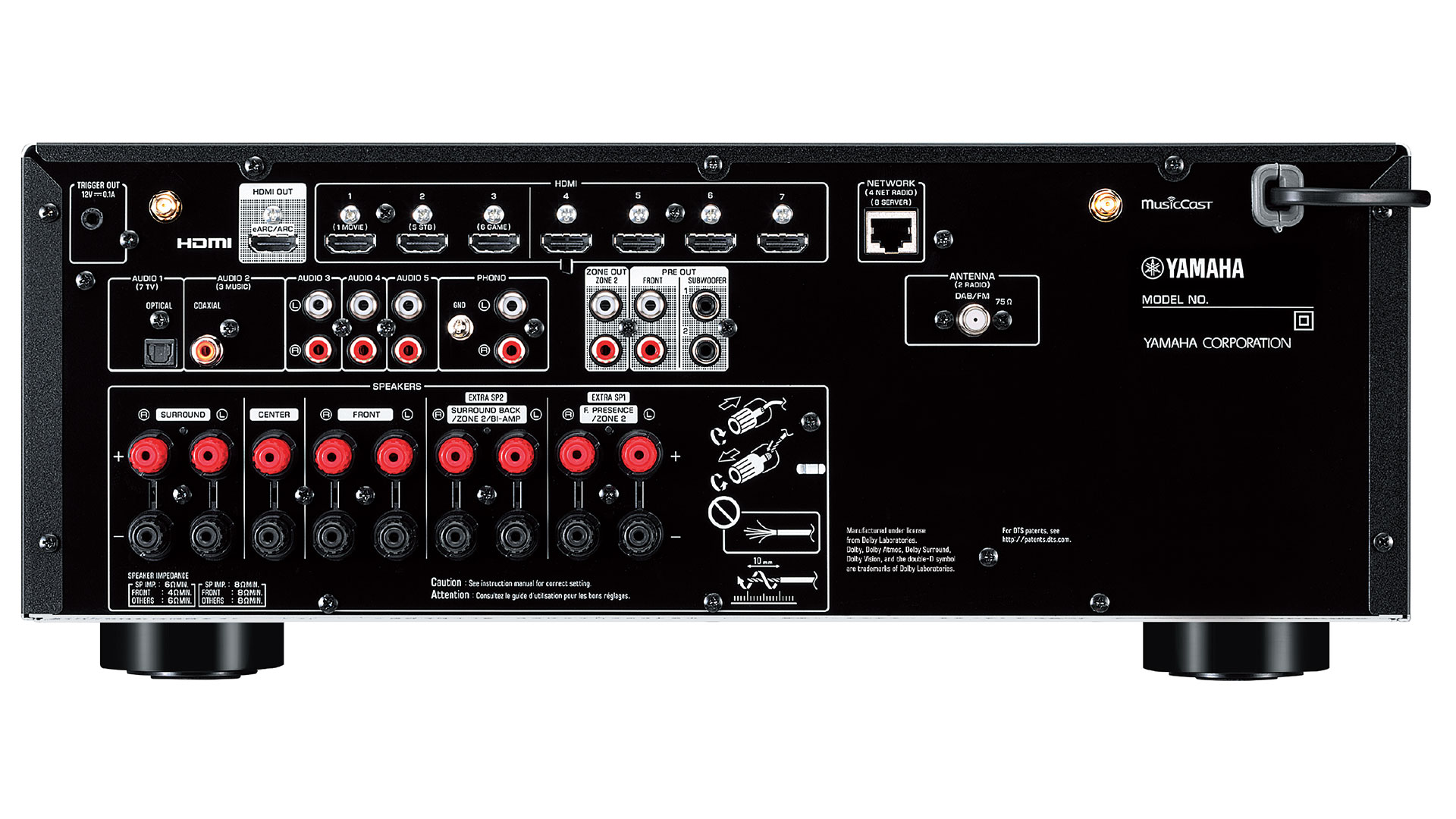
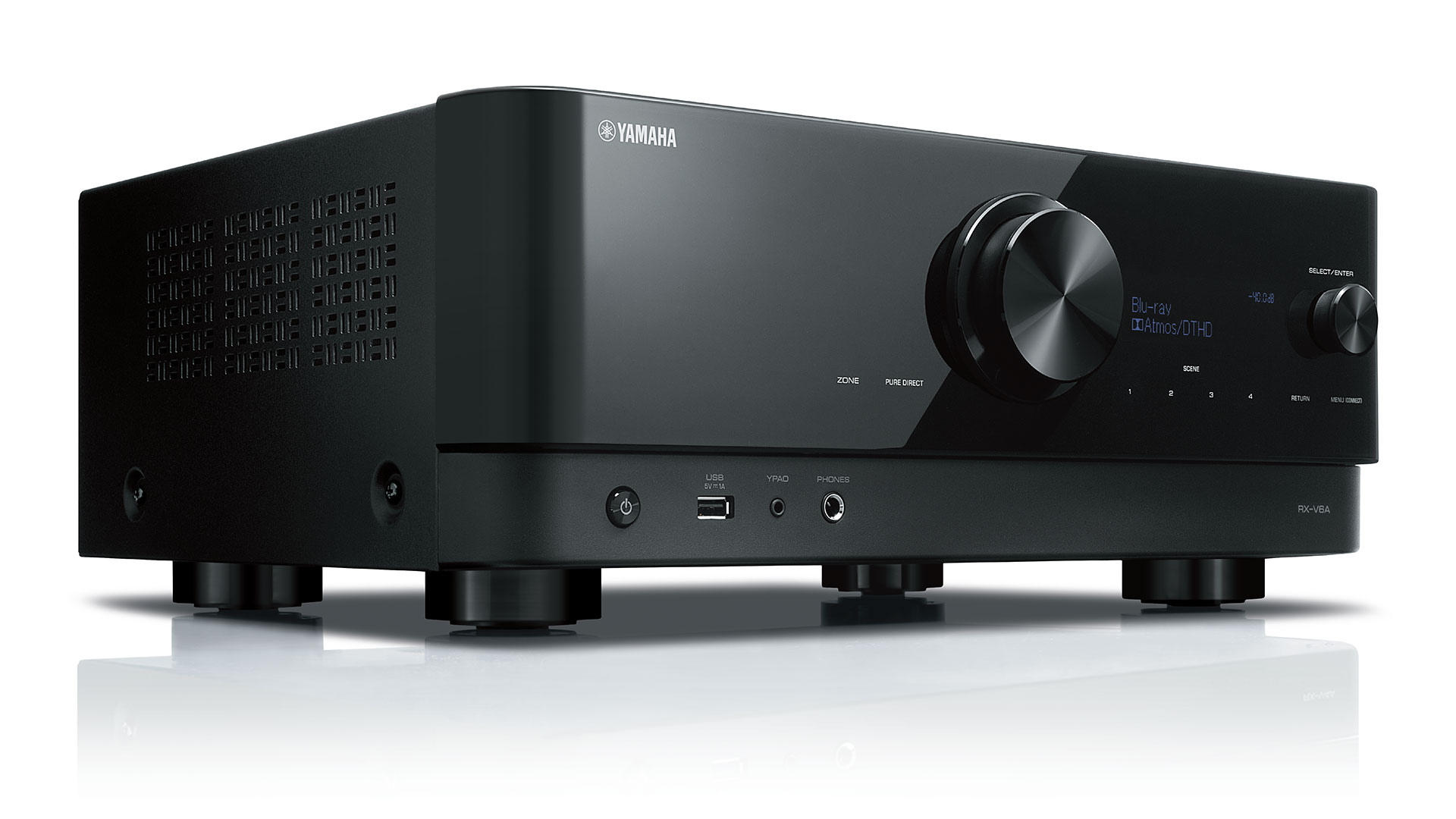
Tested with firmware: 1.23
Rated power: 7 x 100W into 8 ohms (20-20,000Hz, 0.06% THD, two channels driven)
Inputs: 7 x HDMI, 3 x analogue stereo, phono, optical digital, coaxial digital, USB-A (front), Ethernet, Wi-Fi, Bluetooth, F Type for FM/DAB+
Outputs: 2 x HDMI, 2.1 analogue output, 6.5mm headphone, 9 pairs speaker binding posts
Zone: 1 x analogue stereo, assignable amplifiers
Other: 1 x 12V trigger out, 1 x calibration microphone
Dimensions (whd): 435 x 171 x 377mm
Weight: 9.8kg
Warranty: Two years
There are seven HDMI inputs. As we write, Yamaha says that advanced features such as 4K at 120 hertz and HDR10+ video signals will be supported with a future firmware update. We did test the unit with regular Ultra HD and both HDR10 and Dolby Vision high dynamic range, and it passed these through with no problems. Indeed, it was fine with high frame rate Ultra-HD 2160p/60 encoded with Dolby Vision. That’s about as high a throughput as is available from the Ultra-HD Blu-ray format.
We must add here the caveat that we’ve mentioned with all 2021 receivers – there have been reports that the current set of HDMI chips do not fully support 4K/120, though this is generally when there is an 8K input (which there isn’t here). We’ll have to wait and see.
Also to be added in a further update are several game-dedicated functions: Auto Low Latency Mode, Variable Reflesh Rate, Quick Media Switching and Quick Frame Transport. Essentially, these work to reduce delays. Latency is a killer in real-time gaming.
There’s a single HDMI output. Three sets of stereo analogue inputs are provided, along with a phono input suitable for use with a moving-magnet cartridge. An optical and a coaxial digital audio input are available. And this being 2020, there’s also Ethernet, Wi-Fi and Bluetooth. The Wi-Fi is dual-band, supporting the standards up to 802.11ac, while the Bluetooth is version 4.2 and supports the standard SBC codec, plus the Apple-friendly AAC codec.
We should remind you that this is a receiver, so of course it receives radio. In this case the two ‘bands’ are FM and DAB+ digital radio.
The receiver comes with an IR remote control, and is also thoroughly controllable using the MusicCast app on a smart device, Apple or Android, phone or tablet.
Set-up & calibration
The Yamaha RX-V6A doesn’t really run a first-time wizard, as such. It asks you your language and then it’s up to you to perform the calibration. Basically, you manually specify the intended position of one pair of channels: surround back, height (overhead) or presence (high on the front wall).
That done, you plug in the supplied calibration microphone and place it at head height at the listening position (you can also do multiple positions if you prefer). Once you plug in the microphone, Yamaha’s YPAO calibration system is invoked and you can then simply follow the on-screen instructions.
The calibration looks after speaker sizes, distances, levels and EQ. With our system, YMAO chose reasonable crossovers, and later we certainly approved of the sound. The default EQ aims at Yamaha’s ‘Natural’ curve, which gently eases higher frequencies to produce a solid, cinema-like sound. But you can easily switch it to ‘Flat’ (a flat frequency response), ‘Front’ (the rest of the speakers are tuned to match the front speakers, which are left unaltered) or ‘Off’.
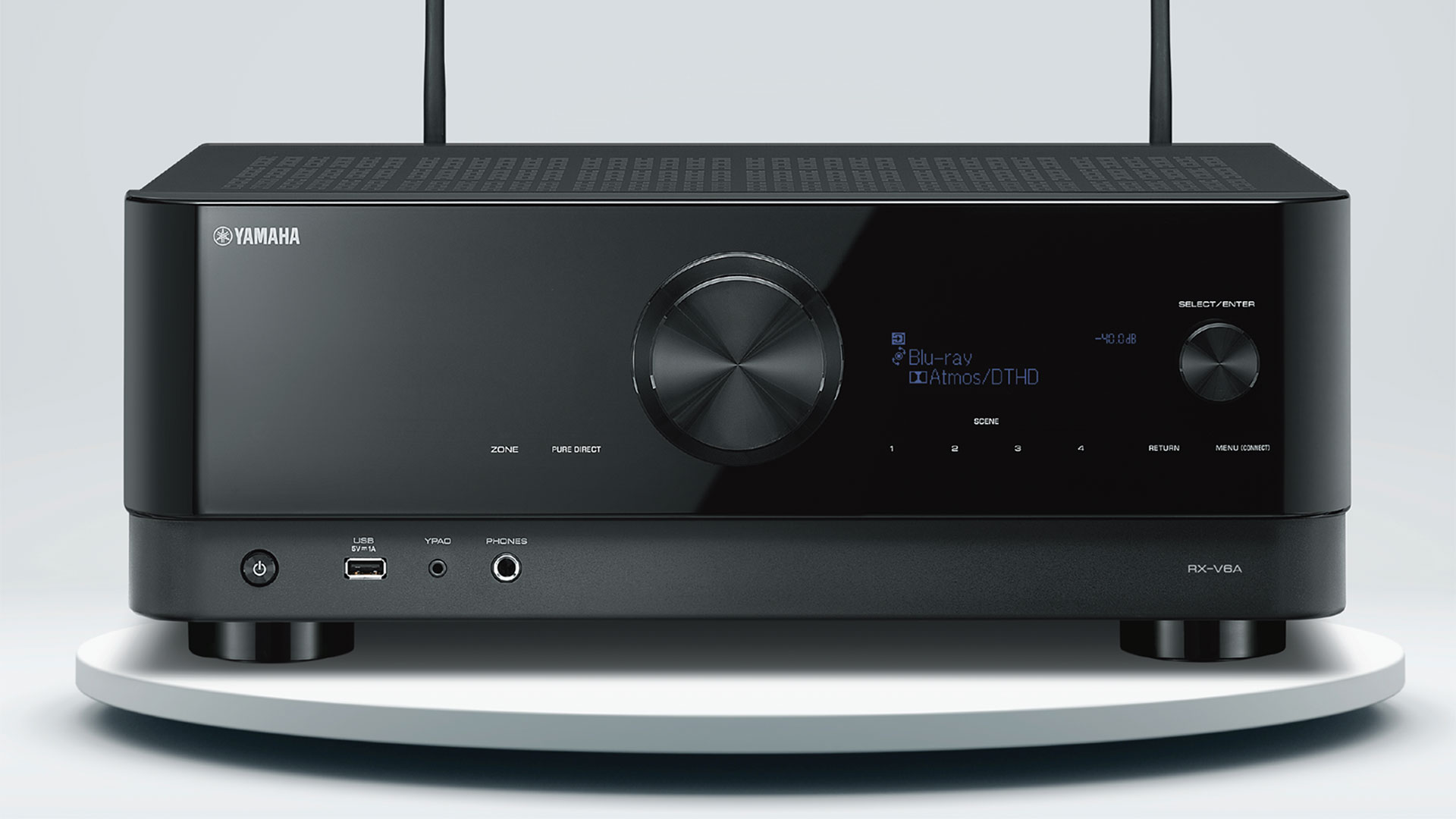
Performance
We found the sound quality with movies simply wonderful. There was plenty of power available to drive our system to cinema-like levels. The crossovers worked effectively at pulling out the bass and sending it to our subwoofer. Surround imaging was excellent.
As we noted above, we’ve been reviewing Yamaha home theatre receivers for many years, and they’ve never once disappointed.
The automatic lip-sync adjustment available when connected via HDMI was effective – our TV typically adds around 120ms of delay to the video, so it’s obvious if there is no correction. Indeed, all the HDMI control functions worked well, switching on the receiver automatically as required, flicking it over to the input into which we had our UltraHD Blu-ray player plugged.
For music, we tapped the ‘Pure Direct’ button on the remote to get rid of the processing and crossover. The receiver actually did a quite nice job with music from our turntable, plugged into the receiver’s phono inputs. The sound was clean, with decent stereo imaging and detail.
On the video side, things were a bit basic. We’ve related how the receiver passed through all signals cleanly. We also noticed in the HDMI section of the set-up menus the ability to upscale HDMI to 4K (Ultra-HD) output. This was off by default. We switched it on, and initially it did not seem to work. The reason turned out to be that it’s quite limited. It will upscale 1080p to 2160p, but it doesn’t work on anything less, not even 1080i.
Furthermore, when we tried playing a standard Ultra-HD disc with regular HDR with 4K upscaling switched on – it should have done nothing with such a disc – the TV would no longer produce an image. All it showed was a black screen with the HDR logo (produced by the TV when it detects that signal) irregularly pulsing in the corner of the screen.
The receiver’s onscreen menu wouldn’t work once that happened. All returned to proper operation once we stopped playback (the player drops back to 1080p). We switched off 4K upscaling and proper operation was restored.
The receiver’s remote control has four ‘Scene’ buttons, replicating those on the front panel. We do like these. Hold one down for a few seconds and the current settings for the receiver are stored, including input and things like sound and video modes. So you can switch to, for example, Phono input and Pure Direct with a press of just one key. Then back to movie viewing with another signal button press. Neat and convenient operation indeed.
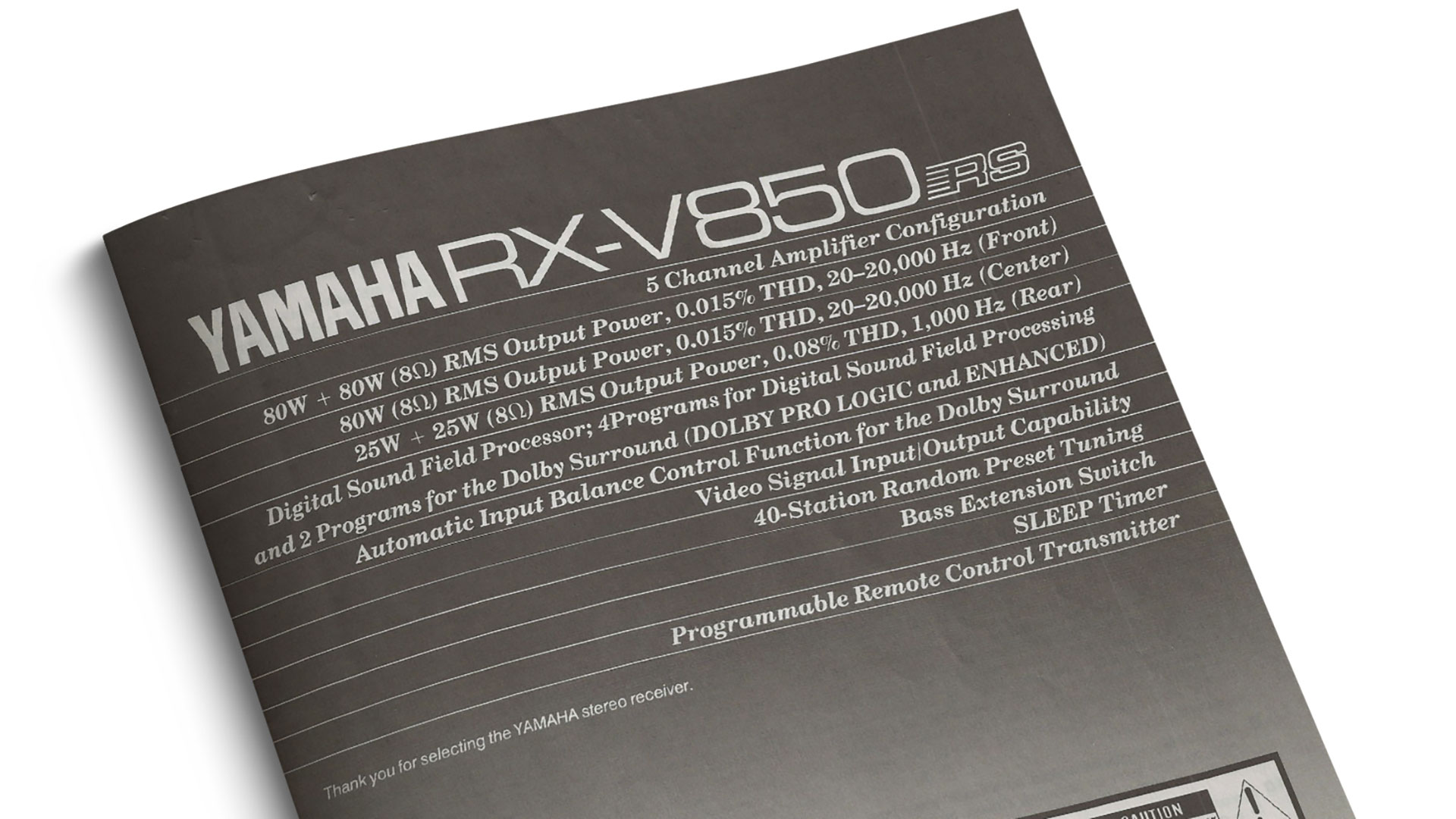
Smart functionality
Yamaha’s network capabilities are thoroughly worked out and operated with complete reliability, whether by Wi-Fi or Ethernet connection. The unit does implement a web interface, but it isn’t a full control panel, just an alternate way to change some basic network-related settings.
Meanwhile, whether we used MusicCast or our own DLNA software, all music we threw at the receiver was reproduced effectively. That included FLAC-encoded PCM up to 24 bits and 192kHz sampling, and double-speed Direct Stream digital.
The receiver’s audio information display usefully confirmed that these were being properly received.
And as far as we’ve been able to determine, Yamaha’s receivers still remain the only ones to which we can direct DTS 5.1-channel sound ripped from DTS CDs and encoded to FLAC. The receiver recognises it, after decompressing the FLAC format, to be DTS and decodes it to proper surround sound. That’s a great way to enjoy ‘Days of Future Passed’.
Verdict
The Yamaha RX-V6A is a fine not-so-entry-level networked and nicely smart AV receiver, and with its welcome face-lift you’ll know this is a firmly 21st-century unit. A must-consider if you’re seeking surround and music power at this price.
Sound+Image is Australia's no.1 mag for audio & AV – sister magazine to Australian Hi-Fi and to the UK's What Hi-Fi?, and bestower of the annual Sound+Image Awards, which since 1989 have recognised the year's best hi-fi and home cinema products and installations. While Sound+Image lives here online as part of our group, our true nature is best revealed in the print magazines and digital issues, which curate unique collections of content each issue under the Editorship of Jez Ford, in a celebration of the joys that real hi-fi and high-quality AV can bring. Enjoy essential reviews of the most exciting new gear, features on Australia's best home cinemas, advice on how to find your sound, and our full Buying Guide based on all our current and past award-winners, all wrapped up with the latest news and editorial ponderings. Click here for more information about Sound+Image, including links to buy individual digital editions and details on how best to subscribe.
